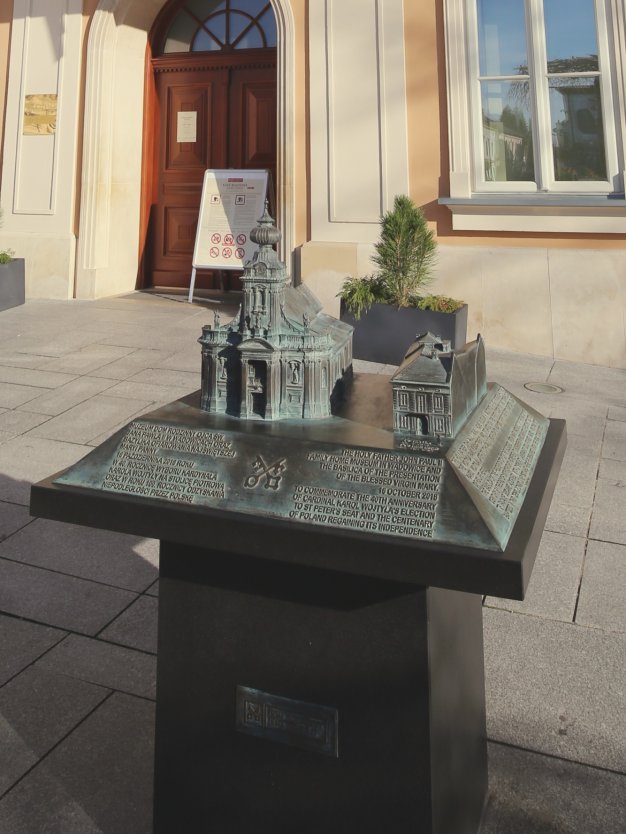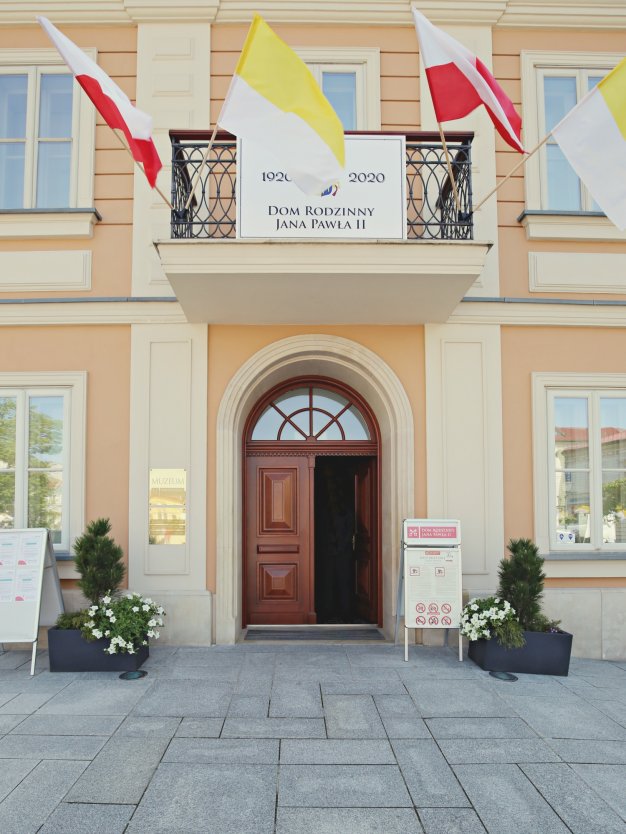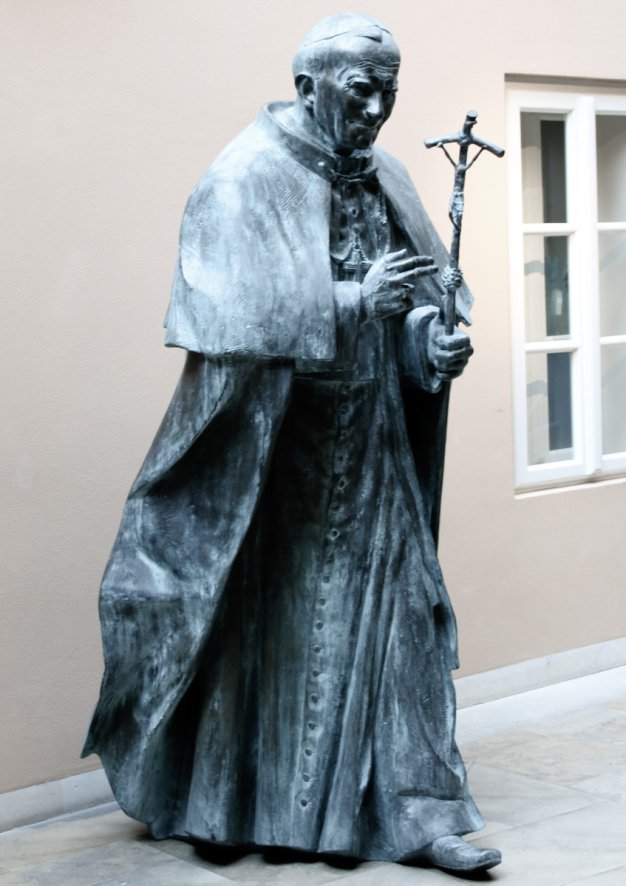
Blind and visually impaired
At the Museum of the Family Home of the Holy Father John Paul II in Wadowice, we strive every day to make it more accessible to our visitors. With the blind and visually impaired in mind, a tour path with audiodescription in Polish was created.
The museum can be visited with an assistance dog and a guide dog. Below is information to help prepare for your visit to the John Paul II Family Home. There is also a pre-guide available in the ETR, which will be helpful for people with visual impairments.
The museum can be visited with an assistance dog and a guide dog. Below is information to help prepare for your visit to the John Paul II Family Home. There is also a pre-guide available in the ETR, which will be helpful for people with visual impairments.
Touchable model of the John Paul II Family Home
On the John Paul II Square, 4.5 meters from the Museum's main entrance, is a mock-up made of brass. It depicts the Wadowice Basilica of the Presentation of the Blessed Virgin Mary and the townhouse that houses the Museum's Family Home of the Holy Father John Paul II. The mock-up features a description in Braille.

Entrance to the Museum
Upon entering the Museum, you can feel the cobblestones under your feet. This is the first of the 16 exhibition zones, the Small Homeland. Here begins the tour of the museum, whose narrative takes you on a journey to the 1920s, from the early childhood of Karol Wojtyla to the subsequent zones telling the story of the life and activities of the future Pope John Paul II. Here you should present your ticket to the museum. Scanners read code from mobile devices as well as traditional printouts.


EXHIBITS YOU CAN TOUCH
During the tour, in addition to the exhibits in the showcases, there are at least 20 objects or elements of the exhibition that can be touched. They can be found in the various zones:
- Bałamuth's store: an original National store cash register from the pre-war period;
- Carmel: old hanging windows depicting views of interwar Wadowice;
- Highlander Baca: mission cross, wall of wooden blocks;
- Apartment of the Wojtyls: uniform of the 12th infantry regiment worn by Karol Wojtyla senior and officers, Singer sewing machine (beware of sharp elements), period furniture including: table, oak chairs with velvet upholstery and pre-war sideboard, velvet curtains, tiled stove, kneeler, kitchen stove with cast iron fittings, sink, bowl and basin jug, stoup;
- Cracow, thank you: limestone blocks from the quarry;
- Sail to the deep: a replica of Peter's boat;
- Forgive the assassins: statue of Our Lady of Fatima;
- Church built on the rock of love: a replica of the Holy Door, the gates of reconciliation symbolizing the Sacrament of baptism and penance;
- And home became the world: a globe;
- This passing has sense: wall panels symbolizing the Garden of Olives.
Museum courtyard
In the museum's courtyard, where the exhibition tour ends, is a 2-meter-high statue of the Holy Father John Paul II made of brass. It depicts the pope in a cassock with a wide belt and a cross on his chest, covered with a cape called a mucet, with a piuska on his head. The figure is fixed in motion, supporting himself with a ferula, or papal staff ending in a cross. The right hand is slightly raised in blessing.
